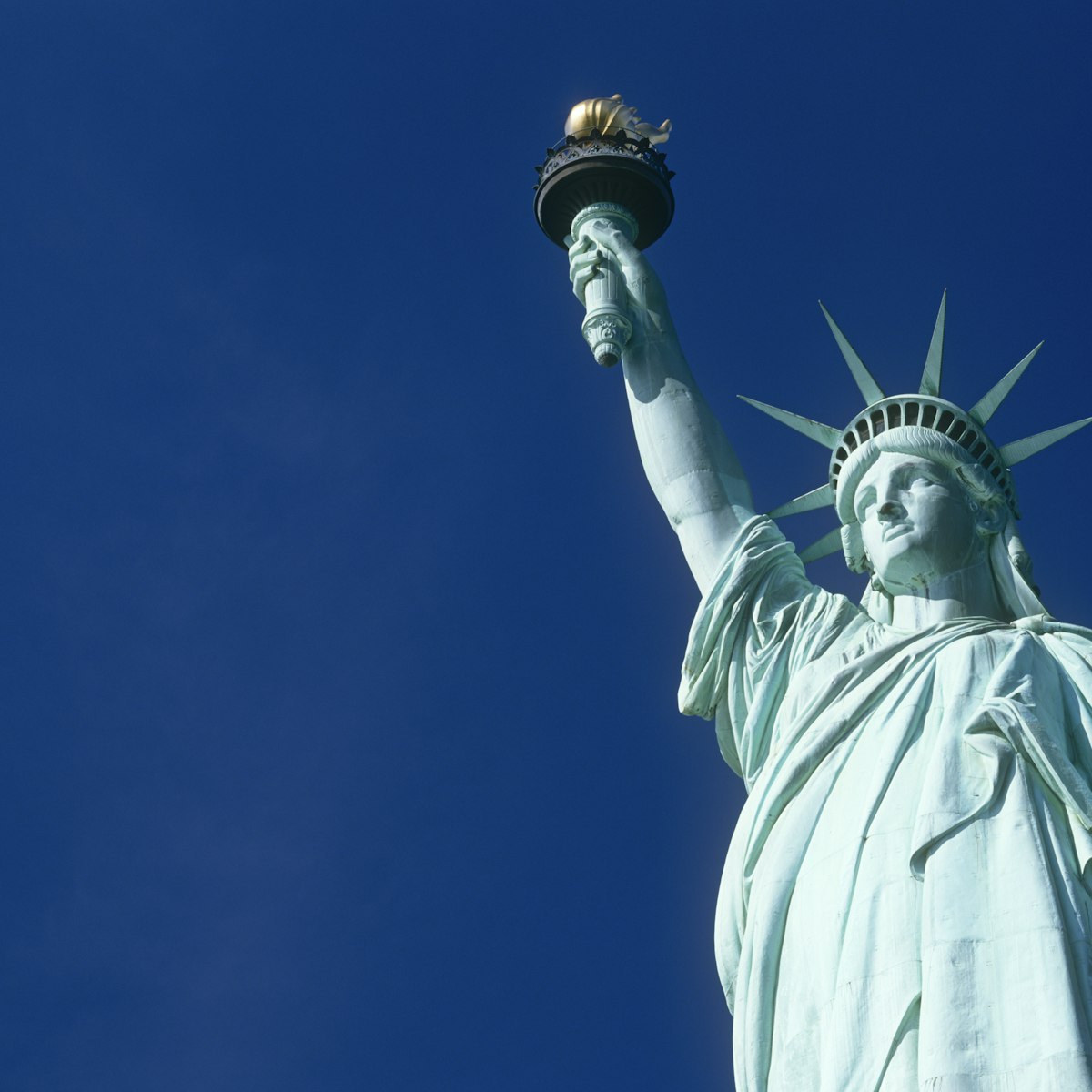A New York icon, the Brooklyn Bridge was the world’s first steel suspension bridge, and, at almost 1596ft, the longest when it opened in 1883. Construction was fraught with disaster, but the bridge's neo-Gothic towers have endured as city emblems. Crossing the bridge is a breeze-buffeted, exhilarating journey with numerous photo-ops. The suspended bicycle/pedestrian walkway delivers soul-stirring views of Manhattan, the East River and the waterfront.
Sadly, one man deprived of this view was the bridge's designer, John Roebling. The Prussian-born engineer's foot was crushed in an accident on Fulton Landing in June 1869; he died of tetanus poisoning a few weeks later, before construction even began. His son, Washington Roebling, took over the work, which lasted 14 years and managed to survive budget overruns and the deaths of an estimated 27 workers.
History
The younger Roebling himself suffered from the bends (decompression sickness) while helping to excavate the riverbed for the bridge’s western tower and remained bedridden within sight of the bridge for much of the project. His wife, Emily, also blessed with mathematical and engineering gifts, oversaw construction in his stead. Another tragedy came in June 1883, when the bridge opened to pedestrian traffic: a bottleneck of pedestrians, a woman falling on the stairs and some panicked cries set off a frenzied rush in which 12 people were trampled to death and dozens more were seriously injured.
Today, the Brooklyn Bridge is much more mellow to visit, and it's easy to see why it's remained one of the most recognizable, beloved structures in a city with no shortage of iconic architecture. In 1972, historian David McCullough spent a whole book chronicling the bridge's construction and design, while Ken Burns dedicated a 1981 documentary to the Brooklyn Bridge's history. Richard Haw penned a cultural history of the Brooklyn Bridge, from the poetry of Walt Whitman to Fran Sinatra's It Happened in Brooklyn to Cher's Moonstruck to protests, postcards, and scores of pedestrians who show up each year to walk the bridge themselves or snap photos from choice vantage points in its shadow.
Best spots to photograph the Booklyn Bridge
Pebble Beach is a popular spot to get views of the bridge with Manhattan's jagged skyline in the background. Time Out Market has a rooftop terrace with lovely views of the bridge's stone suspension towers, as does 1 Hotel Brooklyn Bridge with its Harriet's Rooftop bar and The Crown at Hotel 50 Bowery in Chinatown. The waterfront near Water Street is ace for photos of both the Brooklyn and Manhattan bridges, and the later also affords great views of the former. For a classic shot on the bridge with the wires and suspension cables on full display, start on the Brooklyn side to fit Manhattan in the composition – golden hour is the perfect time. Last but certainly not least, Brooklyn Bridge Park shouldn't be missed either, whether for hangouts or updating Instagram.
The Brooklyn Bridge is about a mile long, though the entrance paths add another half mile combined. The central portion for pedestrians and cyclists is called the promenade, and is protected from the six lanes of car traffic by both railings and a slight height advantage. To walk across the Brooklyn Bridge, enter the pedestrian and cycle path from the Brooklyn Bridge-City Hall subway station (Manhattan) or start at the Brooklyn end by following signs from High St-Brooklyn Bridge station and Cadman Plaza Park. If walking, stay in the pedestrian lane as cyclists move quickly and stop suddenly.
Brooklyn Bridge maintenance
Despite the initial construction challenges, the Brooklyn Bridge was built to last. Though it received maintenance and occasional upgrades, particularly to the concrete roadway, it wasn't until nearly a century after the bridge first opened that its cables showed such dire wear they were replaced just in time for the structure's big birthday. The Brooklyn Bridge withstood Hurricane Sandy in 2012, too, despite minor damage to some its masonry.
Structural repairs that began in 2010 are expected to continue until 2022 – though they're a hassle and can make bridge entrances harder to spot, it's still possible to cross. Renovations of the towers, archways and brick facades began in fall 2019 and are expected to continue into 2023.











